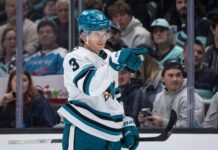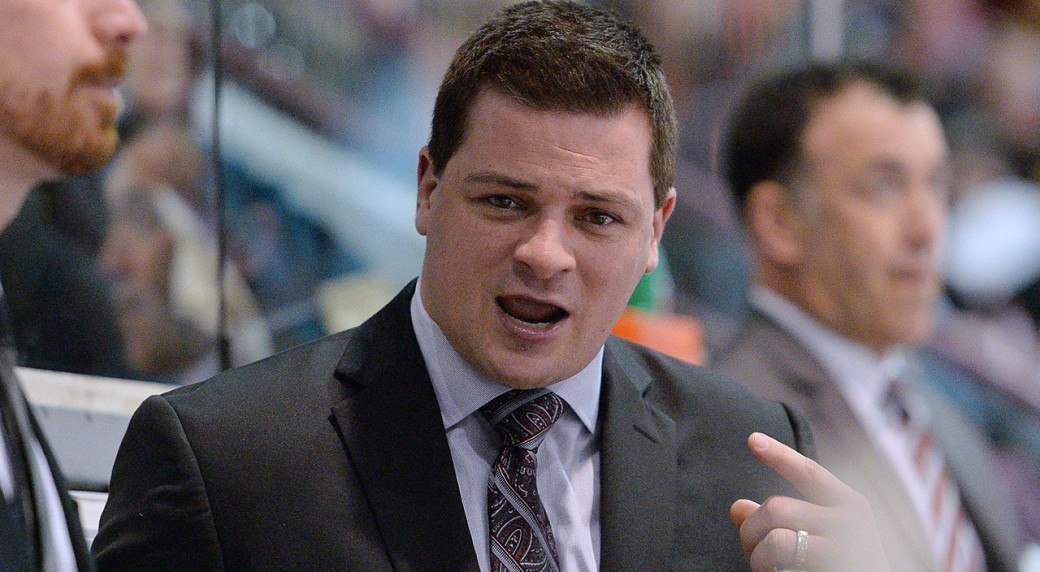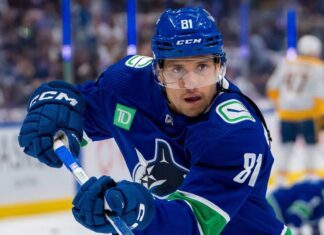Sheldon Keefe joined Ron MacLean and Nick Nurse on Friday evening to discuss his path to becoming an NHL head coach, his coaching style, and his approach to offense in hockey.
On the news that the Ontario government is allowing the opening of training facilities shortly:
I am still getting educated in terms of how it impacts us. The expectation now is that we will gain some access to our facility over at the Performance Center, but the NHL is in a different position [than the NBA]. It will just be those players who are continuing their rehab and recovering from injuries that will be accessing that. A lot of those same protocols that Nick is talking about have been in place and will continue to be in those circumstances.
On wanting to get back to playing but also knowing it has to be done at the right time:
The safety of everybody involved is going to be paramount. It is our job as coaches and players to be as prepared as possible for if and when they give us that greenlight to get back to entertaining people. That is our focus — controlling what we can while, of course, knowing there are a lot of other things happening that are more important. When it is our turn, we will be ready to go.
On his connection with Bryan Murray:
We had the connection to the Ottawa Valley. I was coaching the Pembroke Lumber Kings at the junior-A level at the time. Bryan came up in Shawville and coached the Lumber Kings on his path to becoming an NHL coach. We had that connection.
I was able to have that opportunity to talk to him and reach out. He was gracious enough to have me in his office. I went in there fully expecting 10-15 minutes of his time in the offseason. Actually, at that time, he was undergoing a coaching search. He was a busy guy and was trying to find a head coach at the time himself. I ended up spending two hours in there. The stories and how much of an open book that he was to share… In fact, part of the reason I was there was just to get some advice on how to take a step and how to be prepared for a coaching interview and all of those things.
He went as far as walking me through the questions he was asking to different candidates at the time and what to expect and talked about all of the different stories in his path as a coach and all of the different things that he went through. He was a terrific resource for me and a tremendous gentleman. Of course, when he passed, it was heartbreaking. I was grateful to be at the service and be around the people that he connected with because he certainly was one that reached out to many, many people.
On his approach to when to address a situation in front of the team and when to do it one on one with a player:
You’ve got to be able to adapt to what the situation calls for and what each personality calls for and continue to grow those relationships and check in with different guys. Sometimes it is talking to guys about what is happening in the particular season, and sometimes it is just to continue to have that connection and make sure the player knows you care about them and haven’t forgotten about them at any particular time. That has been one of the real benefits that we are trying to take advantage of with the extra time we have now. With me being a coach that came in mid-season and still working on developing those relationships, having a lot of conversations with guys during this pause has helped me in that regard.
I think you have to be able to adapt. There absolutely is a time and a place where you want to talk openly in front of the group and it can have benefits beyond that one particular player in that case, but certainly, any time you can connect with a player one-on-one, that is really where the gold is at for me, and you try to do that as much as possible.
On whether he draws inspiration from the triangle offense the Bulls ran in the NBA within his systems with the Leafs:
I think there are certainly principles within that triangle offense that transfer. I think there is a lot of correlation in the two sports. They are obviously both five on five. You take the offensive and defensive zones and it is really similar to the play that happens in basketball. Supporting your teammates and moving and all of those types of things — there are some correlations there. We watch quite a bit of basketball and try to learn from those things. Triangulation is something that has been in hockey as a term. Even when I was coming up as a young player, it was talked about.
Those Bulls teams, and the effect that triangle offense had, I think it moved on to multiple sports. Hockey, I think, is certainly one of them. Having that level of support and being able to make multiple plays in different directions and have different options is a big part of everything that we do, but I don’t think we are unique in that in hockey.
On how he responded in the media after the team’s low point of the season in the David Ayres game:
As a coach, I really enjoy watching coaches speak in terms of how they answer and how they deal with different things. I do it regularly in hockey, of course, but even in other sports, especially if big moments are happening, you want to be able to see how the coach is handling the situation. I do remember the presser [after Game 5 of the NBA Finals] and just how calm and confident Nick was — just setting his team up to remain confident and get out and enjoy the opportunity to go play again and get it done. Obviously, that is what happened. I take a lot from that.
I just think any time things go bad or not the way you wanted or expected them to, everybody is then looking to you to set the tone for what is going to happen next. When you step up to the microphone, that is my first opportunity to kind of set the tone — set the tone in the media, to have the players’ back and show I have confidence in them, and I certainly do. One night is not going to make or break our team. We need to press on and prepare for the next day.
That really, as I say, was my first opportunity to speak. I didn’t talk to the team after the game, so I am talking to our fans and the media but I am also talking to the players. All of that comes into play and it is a really important moment as a coach. You have to get that right.

































